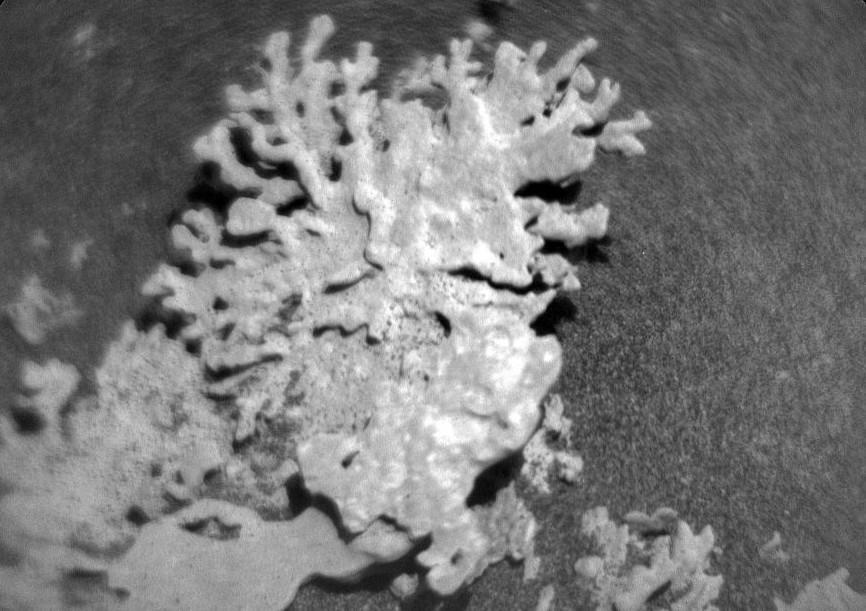
Coral-shaped rock spotted on Mars, NASA shares pic
NASA’s Curiosity Mars rover has sent back some fascinating images from the Martian surface, and this time, it’s not just about rocks and sand. The rover has spotted a peculiar coral-shaped rock in the Gale Crater, a massive impact basin on the Red Planet. The recent discovery has left scientists thrilled, and we can’t help but wonder what secrets this mysterious rock might hold.
The Coral-Like Rock
The rock in question is a stunning example of Martian geology, with its intricate, coral-like patterns and textures. Measuring about 10 centimeters (4 inches) in diameter, the rock is believed to be around a billion years old, dating back to the Hesperian period on Mars. This period was marked by significant volcanic activity and the formation of impact craters, which makes the discovery of this rock all the more exciting.
The rock was captured using NASA’s ChemCam, a laser-induced breakdown spectroscopy instrument that allows the rover to analyze the chemical composition of rocks and soil on Mars. The images sent back by Curiosity show the rock in stark black and white, with its intricate patterns and textures standing out against the Martian soil.
What does it mean?
So, what does this coral-shaped rock tell us about Mars? According to NASA scientists, the rock’s unique shape and composition are likely the result of chemical reactions that occurred on the Martian surface billions of years ago. The rock’s age, coupled with its chemical makeup, suggests that it may have formed during a period of intense volcanic activity, when the Martian surface was still relatively young and dynamic.
The discovery of this rock also provides valuable insights into the geological history of Mars. By studying the rock’s composition and structure, scientists can gain a better understanding of the planet’s evolutionary processes and the conditions that existed on Mars over time.
The Importance of Mars Exploration
The Curiosity rover’s discovery of the coral-shaped rock is just the latest in a long line of exciting findings on Mars. Since its landing on the Martian surface in 2012, Curiosity has been providing us with a wealth of information about the planet’s geology, climate, and potential habitability.
Mars exploration is crucial for understanding our place in the universe and the potential for life beyond Earth. By studying the Martian surface and its geological features, scientists can gain valuable insights into the formation and evolution of our own planet, as well as the possibility of life on other celestial bodies.
What’s Next?
As NASA’s Curiosity rover continues to explore the Martian surface, we can expect even more exciting discoveries in the future. With its advanced instruments and capabilities, the rover is well-equipped to uncover the secrets of Mars and shed light on the mysteries of the Red Planet.
The discovery of the coral-shaped rock is just the beginning, and we can’t wait to see what other wonders await us on Mars. With NASA’s commitment to Mars exploration and its willingness to share its findings with the world, we’re confident that the next few years will be filled with groundbreaking discoveries and a deeper understanding of our place in the universe.
Source:
https://www.jpl.nasa.gov/images/pia26634-curiositys-chemcam-views-a-rock-shaped-like-coral/






